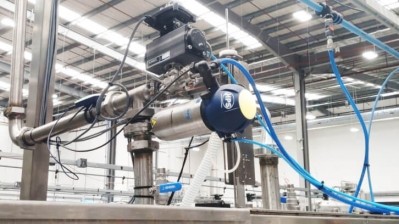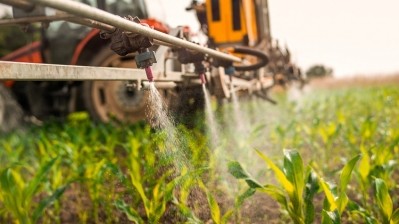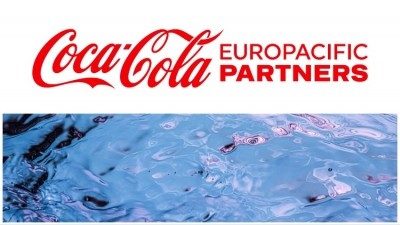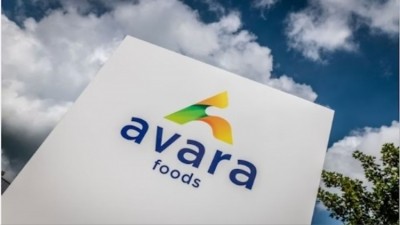Feature
3 ways of improving your factory’s water efficiency
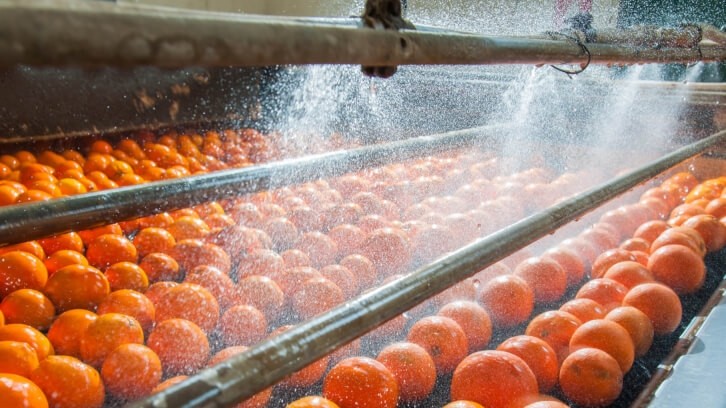
With the water crisis escalating, careful consideration must be given to its management, particularly in the area of food and drink which relies so heavily on this commodity. To put this into context, figures from Save the Water estimate that in order to grow and produce food for a family of four for just one day, you’d need to use approximately 25,000 litres of water.
Alongside the water used to grow our crops and the water which goes into our food as an ingredient, F&B plants also use water for activities such as cleaning, cooling and heating – processes which may be overlooked.
Food and drink companies have been adopting a number of strategies when it comes to managing their water quality and its use, with those who do this most effectively not only helping to secure our future food system but also the loyalty of today’s eco-conscious consumer.
Efficient pumping technology
When it comes to sustainable water management, one of the areas which may not receive as much attention as others is the energy it requires to manage processes using water.
“Typically, food businesses have focused their attention on their core processes and all the different machines that use energy. But one of the things that I think is frequently overlooked is moving water – water that's used for cooling, wastewater that's generated and wastewater that has to be treated – this entire process is really energy intensive,” explained Xylem’s Vinayak Subramanyam, the firm’s industrial director for marketing and business development in Europe.
“Water and wastewater is sort of a painful necessity, that's the reason why it often gets forgotten. Whereas food factories may spend a lot of time perfecting and optimising the actual core process that it takes to make the food or the beverage, water elsewhere becomes a periphery.”
Subramanyam explained it as such: For any sort of cooling process, you need pumps, and those pumps use an enormous amount of energy. So if you’re not paying attention to the equipment that’s used in the water cycle, be it pumps or otherwise, you’re not being as efficient as you could be.
“Rotating equipment like pumps could equate to around 30-40% of energy costs in a typical industrial plant,” he added.
As a global water technology provider, Xylem has worked with a range of customers to improve their water usage, including through optimised cooling systems and pumps. One recent piece of kit added to its portfolio to this end is the multistage pump, which has an ‘integrated frequency drive’ built-in called the ‘Hydrovar X’. In basic terms, this technology controls the speed of a motor, meaning, in this case, that the pump can be manipulated to operate only when it needs to, thus saving energy.
Similarly, on the wastewater side, you have wastewater pumps, which send the water to the wastewater treatment plant. Offering an optimised solution for this, Xylem developed its Flygt Concertor. This is a submersible and intelligent pumping system that uses gateway connections to leverage a plant’s existing process control algorithms and finds the optimal duty points for the Concertor pumps, reducing operating costs and site visits.
So instead of having a range of heavy-duty pumps – because typically industrial facilities need a variety of different sized pumps – this one is designed to meet an array of flow and head requirements. Moreover, based on the flow of water and the thrust, it can automatically adjust how much energy it's putting in. It also has the added benefit of anti-clogging technology, capable of sensing a blockage and removing materials or debris by reversing the flow.
Filtration technology
Filtration is another area in which water and energy can be saved with the right tools and approach – and with the added benefit of enhanced quality.
Using beer as an example, Dr Roland Pahl-Dobrick, Pall Corporation’s beer marketing manager, told Food Manufacture that while there are many different filtrations steps that can used in this beverage’s production, one of its most popular roles is in quality.
During production beer will be fermented, and that involves yeast – a microorganism that floats in the liquid and creates turbidity. The act of fermentation also induces a pH shift in the product which leads to protein precipitation and of course, the creation of alcohol, which can affect the beer’s appearance too. The issue is when all these components are left unfiltered, you end up with a beer with a, let’s say, murkier aesthetic; and that can hold connotations of spoilage, as well as lower quality and shorter shelf-life.
“Our current estimation is that probably around 95% of the global beer production is filtered beer because of this advantage,” Pahl-Dobrick clarified.
So what does this have to do with water efficiency? Presently, the dominating technology for filtration generally uses something called diatomaceous earth. Diatomaceous earth is the fossilised remains of small aquatic organisms called diatoms. These skeletons are made up of silica which can be mined from rivers, streams, lakes and oceans.
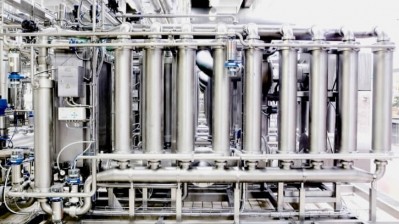
Diatomaceous earth has a range of uses, for example it was used in the first pesticide products created in the 60s, but it’s also a very good filtration aid. However, in order for it to be safe to come into contact with food, it has to be treated.
Overall, the dismantling of these deposits from the ground, coupled with the purification process and its transportation to the breweries, all give it a relatively big CO2 footprint. Moreover, once used it becomes waste.
Pahl-Dobrick elaborated: “It multiplies its mass when it becomes waste because it takes up all the organics that you're filtering away. So the brewers bring in a lot of material to start with and then discharge a lot more waste after its use and for industrial breweries, that can be hundreds of tons every year.”
As a result, Pall Corporation, which use to provide solutions based on diatomaceous earth, has since moved away from this process and to a new technique called membrane filtration.
“With diatomaceous earth filtration you use so-called pre and post runs. That means water is used to push the product out of the equipment,” Pahl-Dobrick continued. “In membrane filtration, you don't need that, instead you can use CO2, ideally recovered from the fermentation process where CO2 is produced, and use that to push the beer through the membranes.”
This new process that Pall implements is called ‘cross flow filtration’, which means the membranes are able to filter for a long period of time without becoming blocked. They can also be reused after being washed.
“So you're replacing this disposable filtration aid, diatomaceous earth, with reusable membranes, and that makes the CO2 footprint of the beer filtration around 20 to 40% smaller. There is potential to optimise the water use by up to 40%, with your energy reduction subsequently impacted by up to 30%.”
Water treatment and product recovery
Another approach for efficient water management is to look at reducing the amount of water you use for cleaning.
With hygiene such a key part of food and drink production, there are a lot of chemicals used to sanitise the equipment. However, these chemicals will need to be washed out with water via a process called flushing.
Flushing is the act of shooting water through the equipment to remove residual product. But what tends to happen is companies will flush the product out, pop in the clean-in-place chemicals – and there may be various chemicals at various times – and then flush it again. This obviously uses a lot of water, but what also can happen, as Peter Elgar, a specialist in advanced liquid product recovery (pigging) technology at HPS Product Recovery Solutions explained, is that the company ends up “getting to a point where they’re flushing and flushing just to make sure it’s safe”.
HPS, a global leader in liquid product recovery and liquid transfer solutions has approached this challenge with pigging technology. By increasing the amount of product recovered from the pipeline, the number of times you need to flush a system to remove the product is reduced, with the added benefit of reducing cleaning time. The ‘pig’ is a specialist projectile which drives the product through a pipeline to its destination.
“We have created what is called a dualpig pigging system, which in basic terms accurately measures a dose of cleaning fluid to clean and sanitise the pipe and flush it at the same time. This means the water you’re using is reduced from gallons to next to nothing,” continued Elgar. “With our technology, when the product is sitting in the line, rather than flushing it out and sending it all down the drain, it pushes the product to the final tanks, or to the bottles, the fillers, etc.
“Typically, you end up recovering 99.5% of the product from a full pipeline.”
Giving a customer example, Elgar told Food Manufacture: “Orlando Wines in Adelaide, Australia, for example, use our pigging technology and distribution transfer technology and has saved an estimated 40 megalitres of water a year. That’s about 16 Olympic sized swimming pools.”
For Xylem, a key investment area has been UV disinfection systems. Rather than using chemicals, radiation from a UV lamp is used to disinfect the water as it passes through – as the UV radiation penetrates the cell wall of the organism it destroys the cell’s ability to reproduce.
“There is a balance needed between chemical and non-chemical disinfection methods used within food and beverage processes. UV specifically has some key benefits, notably that it is a non-chemical form of disinfection and has a very low CO2 and installation footprint. Ozone is the most efficient oxidative technology available on the market and due to it being a point of use system with a low CO2 footprint. Both of these technologies are needed at various points in a food or beverage process including make up water disinfection and dichlorination, CIP and cooling water,” James Leigh, head of business development for EMEA at Evoqua Water Technologies (part of Xylem) explained.
The effectiveness of UV disinfection depends on a few things, including the characteristics of the wastewater and the intensity of the rays. Leigh elaborated: “When it comes to UV dose there are two types, theoretical and physical. A theoretical dose is based on complicated modelling systems such as CFD [computational fluid dynamics], whereas a physical dose is determined by testing a system in real situations that resemble the customers processes, this is known as a bioassay validated dose. A validated dose is when a system is physically tested by an accredited third party. This allows for food and beverage producers to guarantee UV performance based on their requirements where a theoretical dose cannot.”
As Xylem’s, Wedeco UV and atg UV are two of the largest and longest standing UV brands globally, Leigh believes the company’s expertise when it comes to dose and system design are “unmatched”.
Water is being taken more seriously
Without technologies that help to save and reuse water, what normally would happen is that the water would be flushed down the drain and sent to effluent treatment – an expensive and wasteful process. This becomes more expensive when the water has to be transported to a local wastewater plant, as not everyone has the capabilities to manage this on-site.
In certain areas where droughts are more commonplace, they’ll be restrictions on the amount of effluent that a company is allowed to produce before they’re fined, so areas with plants in water scarce regions will be more inclined to invest as a result of regulation and penalties.
But it also depends on the business, as Elgar said: “There are some really forward-thinking companies out there that are looking at all these areas, but they tend to be the bigger companies with the time and resources and the status wherein they need to be seen to be ‘green’. And because they're bigger companies, they will have factories in these water critical areas.”
Within UK-only operating companies, the uptake is perhaps slower than plants in other areas. Leigh expanded: “There's two main reasons for that – our availability of water is a lot better than other countries and the cost is lower in comparison.”
But there is a sea change happening (excuse the water pun), with an increasing number of companies focused more on their water gains for environmental reasons.
“Compared to 10 years ago, people were contacting us about our technology centred on profit and efficiency and in the last 5 years that’s started to change,” added Elgar. “Certainly, in the last two or three, we’ve been seeing a shift to sustainability and water saving as a focus. Of course, it still has to make them [companies] a profit, but I’m getting contacted by more people in sustainability roles now.”
Examples of water efficiency improvements from food and drink manufacturers
PepsiCo
Across its sites PepsiCo has achieved a 5% improvement in its water-use efficiency rate for every unit produced in 2018 vs 2015.
One of the innovations which has helped it on this journey was the creation of its ‘Splash Cone’. With a simple design tweak which enables the water to be sprinkled onto its potatoes (for washing) during slicing, its plant in Leicester has seen it save more than 640m litres of water globally per annum.
Meanwhile, its site in Skelmersdale has reduced the water used to make potato chips by 30% since 2015. This has been achieved through the installation of visual monitors and taps to control the flow of water where possible. This has allowed the team to keep an eye on how much is being used and compare it to the standards the company has defined for the amount of water that should be used at each step.
This site has also made savings by using recycled water – processed at an on-site water treatment facility – both when peeling potatoes and to float them off the delivery vehicles and into the factory.
These efforts make Skelmersdale one of PepsiCo's most water-efficient sites in the world.
McCain
As highlighted in its 2023 Sustainability Report, McCain Foods has achieved its 2025 water use-efficiency target. This has been managed through a variety of water reduction projects. Among those implemented in 2023 include spraybar management optimisation, blancher water usage best practice implementation, and improved hose management.
Last year, the frozen potato business conducted assessments of water-use in its production process and utilities across six facilities. A cross functional team, comprised of internal and external subject matter experts, compared water-use with internal and industry best practice to identify areas of opportunity to improve water efficiency. These opportunities range from no or low investment changes, such as programming updates, fixing leaks and process setpoint optimisation, to longer term and more sizeable changes requiring greater capital investment like water recovery, treatment and recycling systems. Through the implementation of several shorter-term opportunities, water-use intensity decreased by 2% from 2022 to 2023 at the six facilities, and best practice recommendations from these assessments are now being compiled so they can be shared across other facilities globally.
CCEP
Coca-Cola Europacific Partners (CCEP) also has a close eye on water, with its innovation arm ‘CCEP Ventures’ having recently announced a partnership with Deep Science Ventures in an effort to develop new solutions to alleviate water stress.
Dr Francesca O’Hanlon, senior manager in water at CCEP, explained: “We’re working with Deep Science Ventures to tackle water scarcity, by developing solutions that will help us supply water affordably, at scale, with minimal environmental impact.
“We’re searching for water experts and entrepreneurs who can come up with game-changing technologies to help do this. Once we’ve identified and selected these experts, we’ll work with them to set up one to three companies that are developing innovative technology.
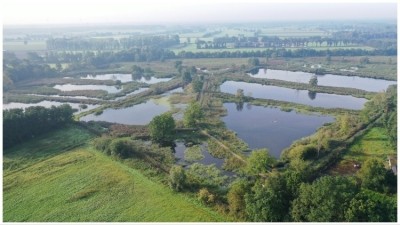
“Ultimately, the aim is to establish businesses that offer solutions to sustainable water generation which can help us meet our water commitments. We know this could be hugely valuable for the entire industry and we plan to commercialise those solutions, so the entire drinks industry can reap the benefits. Of course, these challenges aren’t isolated to the drinks industry alone, meaning there’s potential these solutions may also be applicable for other industries too.”
Speaking on the solutions the company would like to bring to fruition through this partnership, O’Hanlon said: “We want to develop solutions that will help us supply water affordably, at scale, with minimal environmental impact. Existing technologies like seawater desalination or sourcing water from the atmosphere aren’t suitable at scale. They struggle to supply millions of litres of high-quality water per day, at an affordable cost.
“We may find solutions by turning to existing technologies or other established practices – for example, it may be possible to restore the reliability of groundwater and reservoirs. Otherwise, the solutions may draw on new, breakthrough discoveries that haven’t yet had the funding or support needed to be commercially trialled. We are aiming to determine the best solution to tackle water scarcity in the drinks industry and support its development.”
Alongside forward-thinking initiatives like this, the company is also using technologies like vacuum pump fillers to help reduce its water footprint. These have been used within its drink filling processes in the Antwerp, Belgium facility since 2021 and have saved up to six million litres of water annually.
It has also been looking at replenishing water resources where they’ve been depleted. O’Hanlon elaborated: “In line with our aim to replenish (put back into nature) 100% of the water we use in our drinks each year, we’re partnering with local organisations to support water replenishment projects in the areas where we operate – increasing the availability of water in a sustainable manner. Many of these focus on implementing measures to protect and restore the natural ecosystems that contribute to water supply, and so far, we have over 20 projects across Europe, Australia, New Zealand, and the Pacific.
“In some areas of particularly high water stress, we’re also targeting 100% regenerative water use by 2030, which means that the water withdrawn at each location will be equal to the volume of water returned to the local watershed through replenishment projects and the beneficial use of wastewater.”
Considerations for water management partners
When it comes to getting started with water management, Pahl-Dobrick said companies need to identify the right KPIs from the off: “It all comes down to settling on the right key performance indicators – finding out where you are losing efficiency and where you can tweak your processes.”
He gave beer production as a key example of the progress that has been made in water and what is possible: “The specific overall water consumption used to be around 8 litres per litre of product, for example. At a normal industrial level this has improved, decreasing to 4-5 litres. The best in class is around 2 litres per litre. So there is huge improvement potential and there has already been a lot of improvement done to cut down.”
Going forward he suggested: “Look at each step – ask yourself, ‘where in my processes am I using water?’ And then you can look to improve.”
“There's many ways that you can add to a process to make it better, but often people don’t manage what they have efficiently or in the right way,” added Leigh.
Leigh also raised what he considered to be a huge benefit of a supplier – having a single source or a reduced and more sustainable supply chain for your solutions: “Every factory is different, including its processes and its water sources, which often requires experience and an individually tailored approach.
“When you are implementing a sustainable future, you've got to manage your supply chain in the same way. When using a consolidated supply chain, you can more easily ensure the supply chain is aligned and that suppliers are using the same sustainable practices within their own processes and products. You can also ensure these products will connect and integrate on site more effectively, leading to higher efficiencies within the plants working processes.”
With scope 3 emissions such a prominent area of sustainability and new regulations necessitating more data, providers with multiple strings to their bow could indeed fare better.
